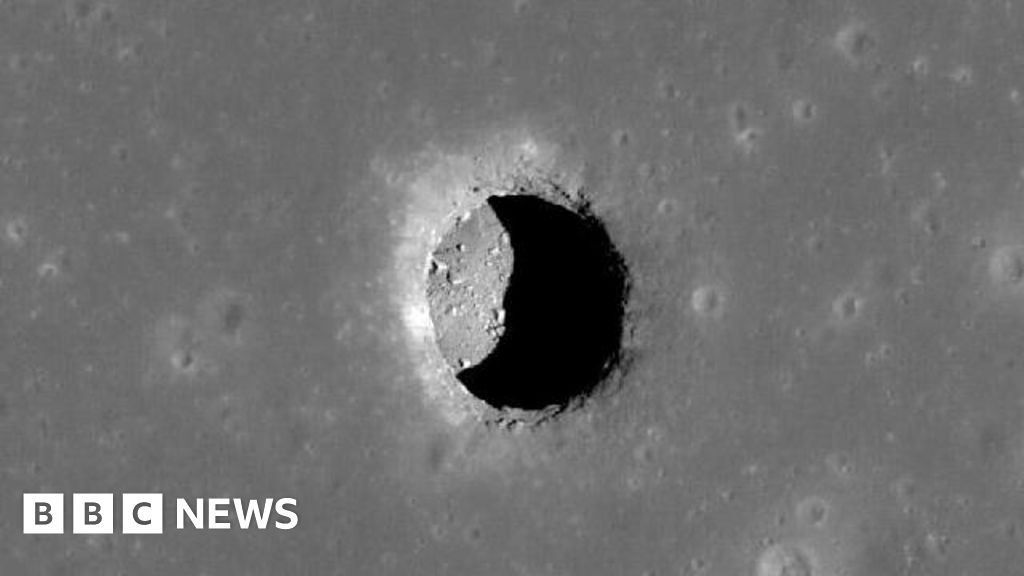Scientists have for the first time discovered a cave on the Moon.
At least 100m deep, it could be an ideal place for humans to build a permanent base, they say.
It is just one in probably hundreds of caves hidden in an “underground, undiscovered world”, according to the researchers.
Countries are racing to establish a permanent human presence on the Moon, but they will need to protect astronauts from radiation, extreme temperatures, and space weather.
Helen Sharman, the first British astronaut to travel to space, told BBC News that the newly-discovered cave looked like a good place for a base, and suggested humans could potentially be living in lunar pits in 20-30 years.



Just wondering what it means for history if the first humans to start living on the Moon do so in a cave.
Maybe space cavemen?
We’re cavemen on the Moon, we carry bone harpoons! But there ain’t no whales so we tell caveman tales and sing a whaling tune!
Because it’s costly to bring materials and to set up mining operations, a lot of tools will be made of readily available moon rock. So, maybe we’ll have a moon stone age, too.
More, shelter.
There’s no atmosphere to attenuate hard radiation, so rock overhead is the next best thing.
There’s no gravity to contain an atmosphere, and domes are expensive and time consuming to build. Meanwhile the crews are exposed to radiation.
There’s nothing but regolith on the surface of the moon-- finely powdered rock of unknown (and likely poor) assay for vital ores and minerals useful to bootstrap a colony.
A cave provides shelter, more assay-ably dense ore resources, potentially water in the form of subsurface ice, and potentially a vitrable (melted, glassified rock) cavity to contain a viable, pressurized atmosphere on the quick.
A cave on the moon is a find. Given the potential for neocolonialism in the next decade or three, it’s a boon for whatever program discovers one.
edit: typos
NoAirBNB
Yet…